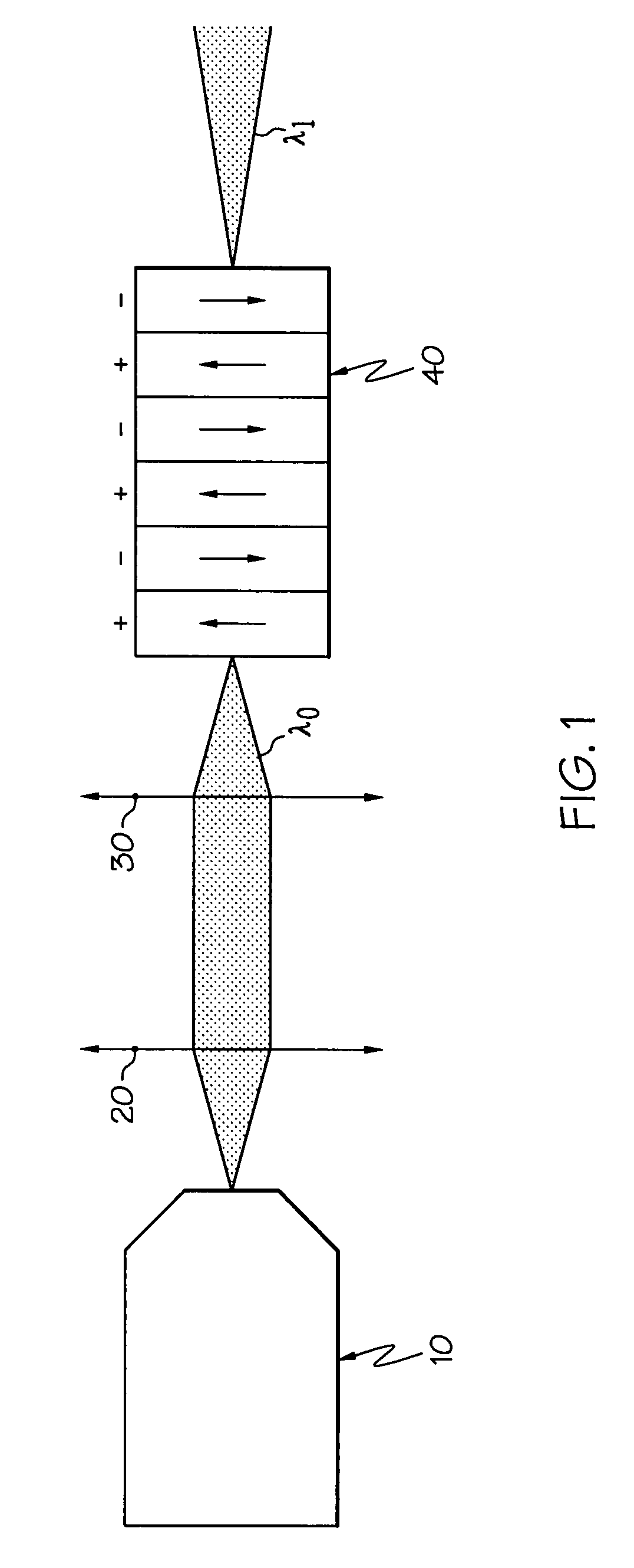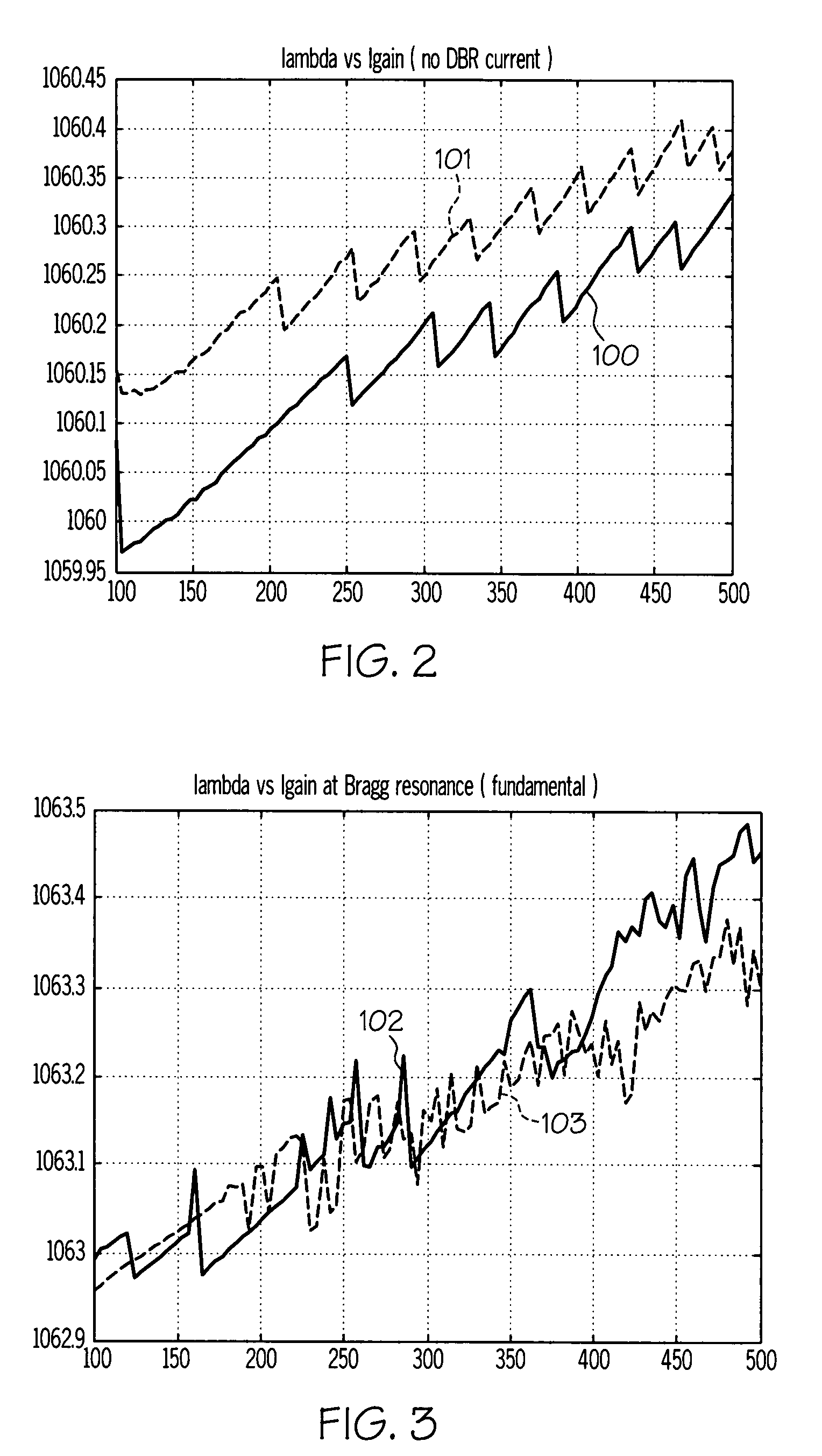Wavelength conversion devices and fabrication methods for same
a conversion device and wavelength technology, applied in the direction of laser details, instruments, light demodulation, etc., can solve the problems of back reflection, unwanted bragg grating, and unstable wavelength of dbr lasers, so as to increase the stability of semiconductor laser wavelengths and minimize back reflections
- Summary
- Abstract
- Description
- Claims
- Application Information
AI Technical Summary
Benefits of technology
Problems solved by technology
Method used
Image
Examples
Embodiment Construction
[0011]In FIG. 1, the DBR laser 10 is optically coupled to a light wavelength conversion device 40 comprising a nonlinear optical material. As will be appreciated by those familiar with laser design, DFB lasers are resonant-cavity lasers using grids or similar structures etched into the semiconductor material as a reflective medium. DBR lasers are lasers in which the etched Bragg grating is physically separated from the electronic pumping area of the semiconductor laser. On the other hand, a Fabry-Perot laser has no wavelength selective section and, therefore generates multiple wavelengths. To operate the Fabry-Perot laser in single mode, it is therefore necessary to introduce a wavelength selective component into the optical path to reflect some light towards the diode and stabilize the wavelength. This function can be achieved by integrating a Bragg grating over a portion of a periodically poled lithium niobate (PPLN) crystal waveguide. It is contemplated that these and other types...
PUM
| Property | Measurement | Unit |
|---|---|---|
| Bragg wavelength λBRAGG | aaaaa | aaaaa |
| phasematching wavelength λΦ | aaaaa | aaaaa |
| Bragg wavelength | aaaaa | aaaaa |
Abstract
Description
Claims
Application Information
 Login to View More
Login to View More - R&D
- Intellectual Property
- Life Sciences
- Materials
- Tech Scout
- Unparalleled Data Quality
- Higher Quality Content
- 60% Fewer Hallucinations
Browse by: Latest US Patents, China's latest patents, Technical Efficacy Thesaurus, Application Domain, Technology Topic, Popular Technical Reports.
© 2025 PatSnap. All rights reserved.Legal|Privacy policy|Modern Slavery Act Transparency Statement|Sitemap|About US| Contact US: help@patsnap.com



